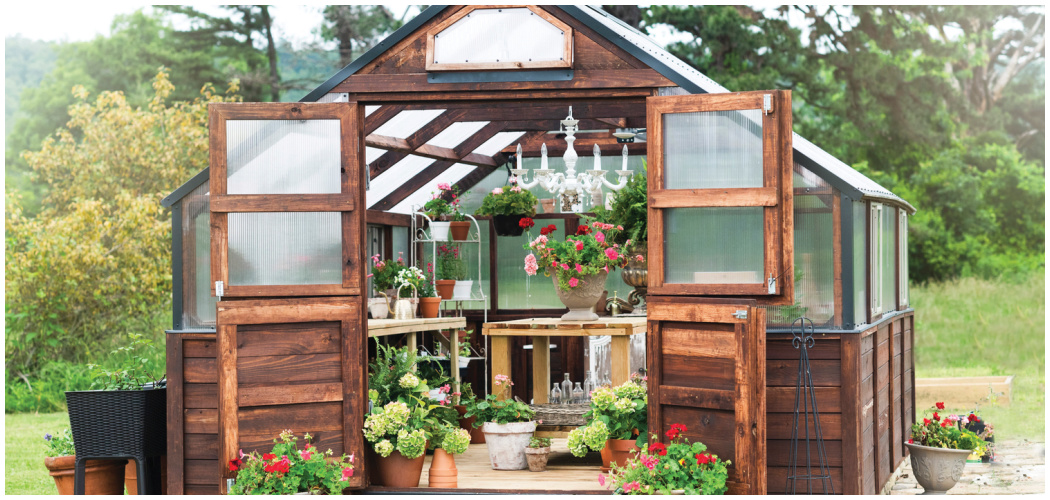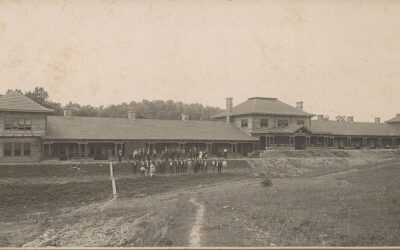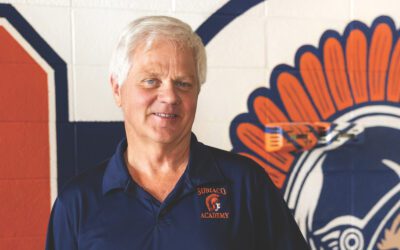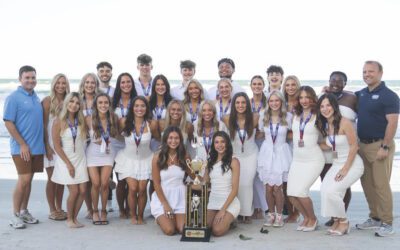[title subtitle=”WORDS Dwain Hebda
IMAGES courtesy Shannon Walker”][/title]
In 2010, avid gardener Angela Yoder was in the market for a greenhouse to help feed her dirt addiction year around. Her husband, medical and pharmaceutical sales rep Travis Yoder, dutifully went online to peruse models to put on the couple’s property. Before long, he noticed a pattern.
“I started looking around and everything I saw was ugly, expensive, flimsy and came in the form of a kit,” Travis says. “I thought, ‘Well, if everything looks like this and is this expensive, I think I’ll just build one’.”
Despite having limited experience beyond light remodeling, Travis sketched out some ideas, and through trial and error constructed a greenhouse of both style and substance.
“After I built one for [Angela], I remember talking to my mother and Angela’s mother and asked if they knew I was building the greenhouse,” Travis says. “They were like, ‘Oh that’s neat. I’d love a greenhouse.’ I kind of asked them all – if you want a greenhouse why haven’t you got one? Everybody said the same thing, ‘Well, they’re ugly.’”
As it turns out, Travis had not only built a stylish enclave for his wife, he’d also unknowingly built the prototype for something people all around him wanted and couldn’t find anywhere on the market. His entrepreneurial ear started ringing.
“I thought, ‘If I’m not the only one having these problems maybe there’s a business here,’” he says. And just like that, Yoderbilt Greenhouses was born.
Travis started advertising his chic, fully constructed greenhouses on Craig’s List in April 2011 and by the end of summer had his first sale, a greenhouse he built with his own two hands. In the early days, company growth was measured in trees, jokes Angela.
“The first place [Travis] started building them was under a shade tree in our front yard area and my dad came on board a few months after,” she says. “[Dad] started building with Travis and they moved to two shade trees. Then we sold more of the greenhouses, and we expanded to two shade trees and a shed when we hired two more guys.”
“That first year under the shade tree was the hottest summer I can ever remember in all of my forty-seven years,” Travis notes. “That was the year where we saw one-hundred-and-ten to one-hundred-and-eighteen-degree temperatures for two weeks straight in late July and early August. The trees lost all their leaves because it was so dry and hot. So, we lost our shade tree shelter.”
For the first eight years of the company, Travis was a one-man wrecking crew, covering as many bases as he could himself from buying materials to construction to delivery. As business picked up, he stopped working on the production end and delivered the finished product to the customer’s door, part of his obsessive commitment to customer satisfaction.
“The areas I picked to advertise to were within about a two-hundred-and-fifty-mile radius from Mansfield, Arkansas, where we live,” he says. “That included Oklahoma City, Tulsa, Northwest Arkansas, Joplin, Springfield, Little Rock, Shreveport, Louisiana, down to Dallas, Texas. It included a pretty good area and today we still serve a geographic area that’s only about two hundred and fifty to three hundred miles from where we’re located.”
Throughout those first eight years, Travis also tweaked design elements and production steps to boost both product features and construction efficiency. He said he had the ideal testing lab setup by getting feedback from Angela as she worked in her greenhouse, the accidental model for the whole business.
“For the most part the general shape and design has not changed from ten years ago, just the general structure,” Travis says. “As far as optional add-on features, those have grown over the last ten years, for sure. I’ve added more things; the electric package and exhaust fan we started doing probably two or two and a half years ago.
“Side windows have been a part of it from day one, although the side windows have changed. I used to build them all out of wood and over time, I just realized wood windows are not as good as a vinyl window. We do have wooden windows still, but they’ve changed. It’s a little bit different design now. It’s a shutter-style window.
“It took us about eight years to get there, but after eight years I ran out of things to tweak.”
Perfecting the components and production methods still left one ingredient missing in Yoderbilt’s overall strategy, however. And that was, to coin a phrase, a woman’s touch.
“I’ll be honest with you; for the first few years in the company’s history, it was men running the company and men doing the marketing and all of that,” Angela says. “Probably about a year and a half ago, maybe a little more than that, Travis realized men were marketing what was basically a women’s product. Most of our customer demographic is women.”
Angela and her friend, professional photographer Shannon Walker, came aboard in sales and marketing roles to cast the greenhouses in ways that appealed to women. Thus, Yoderbilt’s social media posts look like something out of home and garden magazine spreads, complete with staging and artful photographs that frequently feature Angela and the Yoders’ thirteen-year-old daughter Olivia.
It was a home run of a move. From selling fifty greenhouses over the first two years, the company skillfully sold nine hundred seventy-five units in 2020. Employee count has also grown to more than thirty workers, and that’s even allowing for market seasonality where peak-of-summer and winter orders typically drop off.
Travis has grand visions for the future, plans that will take the Yoderbilt brand well beyond the limited market area it’s operated in for almost a decade.
“What’s next is scaling to other locations,” he says. “We realize we have a business that works. It’s here to stay. Now it’s time to grow to multiple markets and that’s where we’re at right now. The next place we’re going, is what I would call the Nashville region. It will service a two-hundred-and-fifty-mile radius around Nashville. We hope to be there August first.
“We’re in the process of building our next shop. It’s underway and we’re going to transport the greenhouses three or four at a time to the Nashville market in what I would call a drop zone. Then I’ll have local drivers deliver them from there throughout that market. We’re also going to do the same thing in the St. Louis market. We’re going to be able to grow, hopefully, to two new markets by this fall. The goal is to grow east and north as fast as we can.”
Even as that next chapter unfolds, the Yoders haven’t missed the opportunity to reflect on how far they have come over the past decade. Looking around, they see that greenhouses aren’t all that they’ve been building during that time.
“When I started doing this, I didn’t understand the concept of what it meant to build a brand. I was just trying to build greenhouses and feed the family and grow a business,” Travis says. “But I have witnessed it firsthand, watching the company grow, that we have almost like a cult-like following among our customers. I never intended to do that, but we have built a true brand that people recognize and the name Yoderbilt, people know who we are. I’m shocked by that, but they do.”
“This definitely has been an adventure for the past ten years. It’s been a fun journey,” Angela adds. “It’s had its ups, it’s had its downs, but overall, it has definitely provided a wonderful life for us. It also allows us to just be a family. We’re together. He doesn’t travel. That was one thing that was hard before with medical sales, he was always gone. So, it’s allowed us to be home together.
“Every choice we’ve made has circled back around to us being able to be a family unit and be together and do things together. The greenhouse business has allowed that. It’s just been really good and I’m ready to continue that journey because we’re not finished yet.”
FOR MORE INFORMATION
Yoderbilt Greenhouses
22401 U.S. 71, Mansfield, Arkansas
479.849.4385
yoderbilt.com




